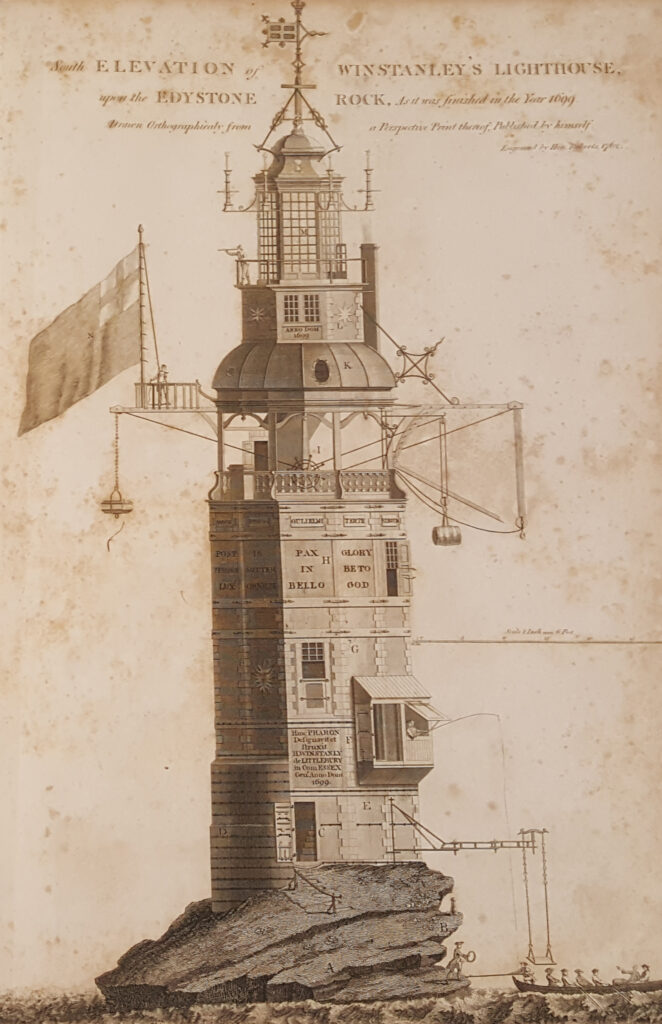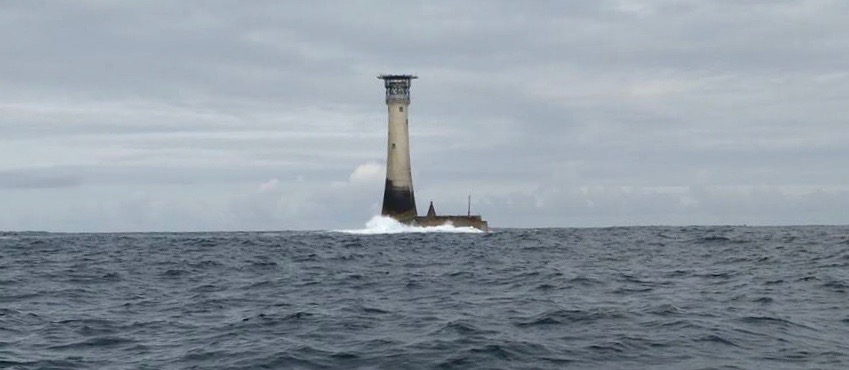Many ships have been lost off the westernmost rocks of the Isles of Scilly, one of the most well known disasters being the loss of Sir Cloudesley Shovel’s squadron of the British Fleet in October 1707, when the only warning light was on St Agnes. 1300 men and four ships were lost.
Following reports on the dangers to shipping, proposals to build a lighthouse on Bishop Rock were agreed, it being the most westerly danger. With the full force of Atlantic gales, up to 30 per year, this was a most hazardous and challenging operation, and it took two attempts to build. In 1847, a screw-pile lighthouse costing £12,000 was started. Before the light was ever lit, the whole structure was swept away in a heavy gale on 5 February, 1850. The second tower was based on Smeaton’s Eddystone lighthouse, with the project finally completed in September 1858. The lighthouse was automated in 1991.


Almost exactly halfway between the Isles of Scilly and Lizard Point near Land’s End, Cornwall is Wolf Rock. Several attempts had been made since 1791 to warn shipping of this hazard, with beacons and daymarks being erected and then carried away by the Atlantic gales. In 1861 work was started on a granite tower, designed by James Walker, the Trinity House consultant engineer responsible for the Bishop Rock Lighthouse. Taking eight years to complete, due to the treacherous weather conditions, with only 302 hours of work being possible over five years. The tower was completed on 19 July 1869 and brought into service in 1870. It was automated in July 1988.
Visit the Trinity House website for more information about lighthouses around the whole of the UK.

You must be logged in to post a comment.